Flowering Vines That Will Do Well in Minnesota
Can’t decide what to plant in your garden this spring? Why not add a little color with these 10 flowering vines for the garden? You’ve probably seen these before on the side of a house or fence, but did you know that most of these recommended plants can be grown as perennial shrubs for your Minnesota-based garden? These ten flowering vines for the Minnesota garden are:
Clematis
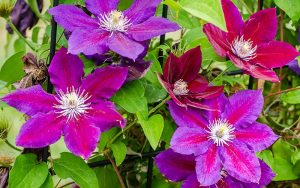
Clematis is one of the most popular flowering vines to grow in Minnesota. They come in various colors, from white to purple and red, and some have variegated leaves. These vines are easy to grow and provide many colors throughout the summer. You can plant them either in containers or in the ground.
Colorful clematis climb trellises and arbors are a great way to add color to your yard. Keep your plants contained by planting them in pots or window boxes.
The best time for planting is early spring before the soil has thawed completely. Once you plant your clematis, ensure it stays moist but not wet until it has established itself in its new home.
Honeysuckle
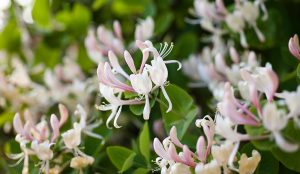
Honeysuckle is a beautiful vine that can be grown in Minnesota. It has fragrant white flowers, often used to make wine or tea. The vines grow and produce berries that are edible when ripe.
Honeysuckle grows in full sun or partial shade. It prefers moist soil, but it can tolerate dry conditions as long as some water is available to the roots of the plant when needed.
In the summer, honeysuckle vines attract hummingbirds and fill your yard with fragrance and color.
Wisteria

This fast-growing vine is a climbing vine that can grow up to 30 feet high. It produces fragrant, purple flowers that are about 1 inch long. Wisteria needs at least 6 hours of sun per day. It does well in partial shade but does not tolerate full shade. Therefore, it’s best to plant wisteria in a shelter away from strong winds and harsh winter temperatures. Wisteria should be planted with plenty of space so it won’t be blown over or damaged by frost. Its wonderful fragrance fills the air as soon as you open the door in the morning.
Pruning your wisteria will keep it healthy and ensure it doesn’t get too big for its spot. If you don’t prune it, the vines can get very tangled, and the flowers won’t be as vibrant. Also, it would be best to cut back any dead or diseased branches on your wisteria yearly to prevent the spread of fungus or disease to other parts of the plant.
Japanese Hops
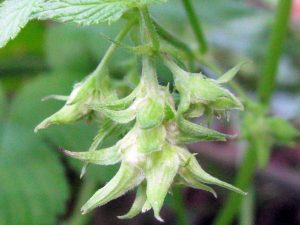
Japanese hop is a hardy vine grown in full sun or partial shade. It has a very high tolerance for cold weather, and its flowers are beautiful. So if you are looking for a vine that will climb up your trellis and attract bees, this is the one!
The Japanese hop plat is an evergreen twining vine producing masses of small white flowers during spring and summer. These flowers have a spicy, minty aroma that attracts bees, butterflies, and other pollinators. The leaves are oval-shaped with serrated edges. They are bright green on top and silver underneath.
These vines can reach heights of 10 feet or more when left alone to grow without pruning or training. Train them onto a trellis or arbor structure, if you like, because they produce tendrils that grab onto nearby objects as they grow upwards towards sunlight.
Sweet Pea
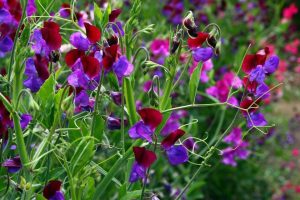
Sweet peas are a great choice if you want to add some color and beauty to your garden. Plant them in the early spring or late summer. They’ll bloom in time for your summer garden parties if you plant them in the spring. They are easy to grow from seedlings you buy at any garden center.
The sweet pea is a vine that will climb up anything it touches, making it a good choice if you want to cover your fence or wall. In addition, you can use it as a ground cover in large areas where grass won’t grow well. Sweet peas are known for their beautiful flowers in many colors, including pink, red, purple, and white. The flowers usually open at night and close during the day, so it’s unnecessary to stake them unless they get too heavy with rainwater or snowfall.
Rich Scarlet Runner Bean

If you’re looking to grow a vine that will add color and interest to your garden, look no further than the Rich scarlet runner bean. This gorgeous vine produces scarlet flowers that will envy everyone who sees them. They’re also easy enough for beginners to grow, and their bright red color will add a pop of color to any garden.
Rich scarlet runner beans are best grown in full sun and planted in well-drained soil. They’re cold-hardy, making significant additions to Minnesota’s north-facing gardens. Give them plenty of space-at least 2 feet between each plant will suffice!
Pink Trumpet Vine
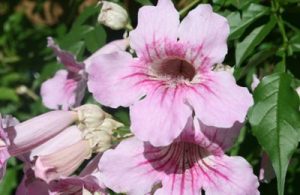
The pink trumpet vine is a beautiful vine that grows in Minnesota. It’s easy to see why this vine is so popular. It has lovely pink flowers attracting hummingbirds, bees, and butterflies to your yard. The flowers are also edible, so you can make a delicious treat by dipping them in chocolate.
This plant has a fascinating history—it was once used as a snakebite remedy! The sap from the plant is toxic if ingested and used to make an antidote for snake bites. It is native to South America and Central America but can be grown in Minnesota with no problem.
It works well in full sun or shade in most landscapes. However, it grows best when planted near other plants with similar watering needs; this will help prevent root rot.
Virginia Creeper
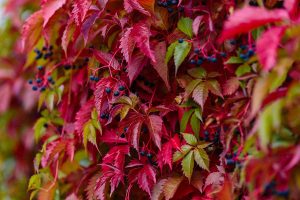
The Virginia creeper is an easy-to-grow, hardy vine that you can use to cover a small wall or fence. Shaded areas can also benefit from it as a ground cover. Cool summers and mild winters are best for growing it. Virginia creeper thrives in full sun but will tolerate partial shade.
The Virginia creeper produces clusters of creamy white flowers from May through June. These flowers are followed by small red berries that are attractive to birds. The berries mature in September.
Virginia creeper requires little maintenance and is generally pest free. However, if desired, you can prune It while dormant in winter to control its size, shape, and appearance.
Red Morning Glory
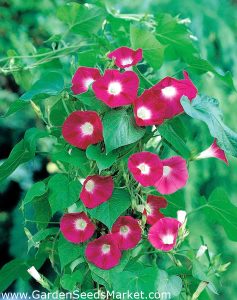
Red morning glory is a beautiful vine growing up to 10 feet tall. This plant is a perennial in the southeast and can be grown annually in Minnesota. The flowers are red and tubular, and they bloom summer through fall. The leaves are heart-shaped and bright green. This vine is easy to grow, but it does need some care.
It does best in full sun and will tolerate partial shade. It prefers moist soil but will accept dry conditions once established. It also prefers good drainage, so it’s not recommended for clay soil or heavy clay soils with standing water.
This plant requires regular watering during the first year of growth. After that, water only when necessary (every one to two weeks).
Red morning glory grows best from seeds planted in the spring. You can start your plants indoors about six weeks before the last frost date if you don’t want to wait until spring (for the zone.
When planting seeds into the ground, cover them with 1/4 inch of soil or mulch; if using container-grown plants.
Climbing Hydrangea

This vine is an excellent choice for Minnesota gardeners with dry soil and sun exposure. The climbing hydrangea can grow 10 feet tall, so it’s best suited for fences, trellises, or other climbing structures. It blooms in June and July with clusters of white flowers that resemble miniature hydrangeas.
Taking care of climbing hydrangeas is easy, just prune the vines back once they climb up a structure or support and trim them back before the first frost.
Tips on Planting
Flowering vines are a great way to add an extra layer of beauty and color to your garden. The best part? They’re easy to grow!
Here are some tips on planting flowering vines in Minnesota:
Check the soil temperature. Wait until the ground warms up before planting your vines if it’s cold outside. As a gauge, you can use a soil thermometer or your hands. If you can’t feel anything through the soil, it’s too cold to plant. Before planting seeds or plants, please wait until the temperature reaches 50 degrees Fahrenheit.
Ensure the area has good drainage and full sunlight. During the day, your vines need plenty of light and warmth. Furthermore, good drainage will prevent root rot and other problems caused by poor drainage.
Pinch off unwanted shoots early, so they don’t use nutrients from their parent plant.
Don’t plant the vine too close to other vegetation or structures, so it has enough room to grow.
Water your vine until it becomes established, then stop watering it afterward.
When selecting vines to plant, look for solid stems and vigorous growth. Plants with weak limbs or yellowing leaves may not survive long after planting.
How To Care for Your Flowering Vines in Minnesota
These plants have a wide range of uses, from ornamental to utilitarian. If you live in Minnesota and want to grow some flowering vines, here are some tips for caring for them, so they thrive and look their best.
Choose the correct type of flowering vine for your climate.
Before buying any crops, Ensure you know what type of climate you live in to choose the suitable species for your region. For example, some flowers only grow in tropical areas, while others need cold weather like Minnesota’s. In addition, it would help to consider how much sunlight each flower needs and its preferred soil conditions.
Plant your flowering vines early enough that they have time to grow before winter arrives.
During the winter months, flowers grown during the summer will die back. Plant flowering vines early enough to mature before winter arrives unless they’re protected by snow cover or mulch that keeps them warm throughout the night (but not too hot). They can continue to grow through spring until they bloom again next year!
Ensure that your soil is rich and moist. Living in an area where you have to water frequently will make this easier. If not, try watering every other day during the summertime.
Find out what kind of sun exposure your flowering vine requires. The amount of light and heat needed by different types of flowers varies. Some plants thrive in full sun all day, while others prefer partial shade throughout the day or during certain seasons, like spring and fall. Ensure you figure this out so your plants don’t die!
You can find out which flowering vines thrive best in Minnesota’s climate by talking with your local nursery. They can advise you on what plants the best suit your yard space and needs (you may also want to ask them about fertilizer).
Keeping your vines watered regularly is essential once you’ve planted them. Because of the climate, rain isn’t a thing in Minnesota. Keep trying! Follow these tips to keep your vine hydrated even when the weather is dry: Use a drip line or sprinkler system, so water reaches all parts of the plant. Rather than watering daily, water once weekly (this will encourage profound root growth).
Takeaway: These Are Great Choices if You Want To Grow a Flowering Vine in Minnesota.
Flowering vines are an excellent addition to any garden, whether you’re looking for something that will provide color during cold winter or just a nice pop of color between seasons. In Minnesota’s climate, there are many beautiful and easy-to-grow flowering vines.
As to maintain vines, prune them every year as they grow taller. This is especially true of perennial vines, which can live more than two years before dying completely. Their beautiful flowers make vines easy to grow and care for in Minnesota. They have many benefits that make them an excellent choice for homeowners looking to add color and beauty to their yards.

